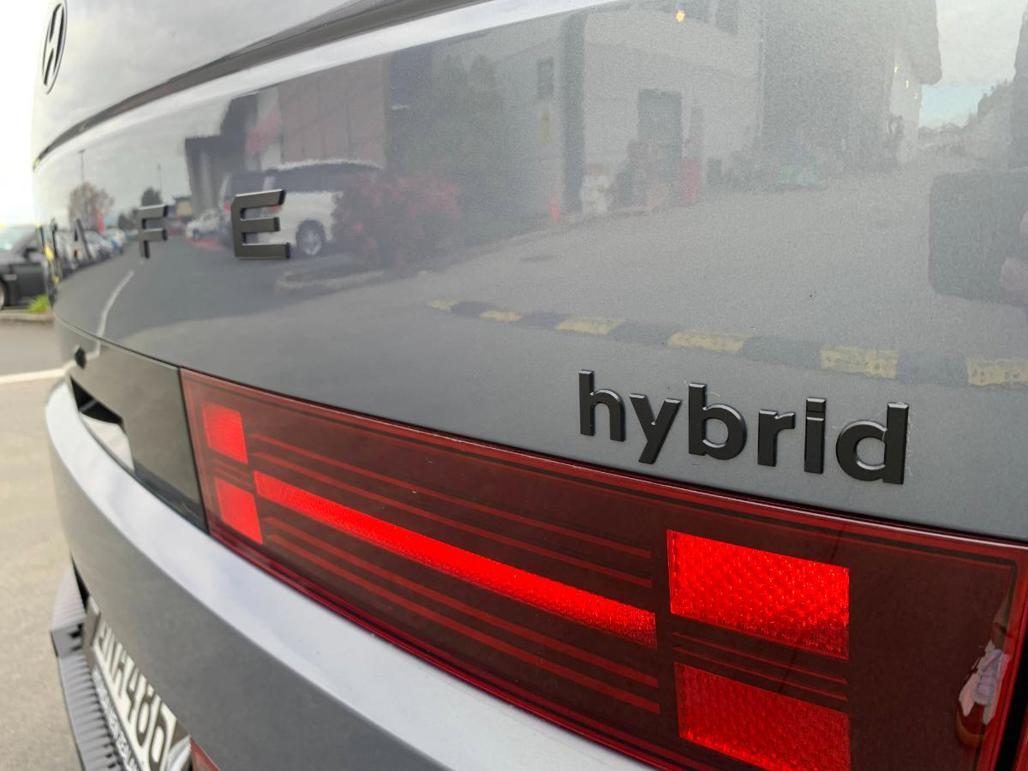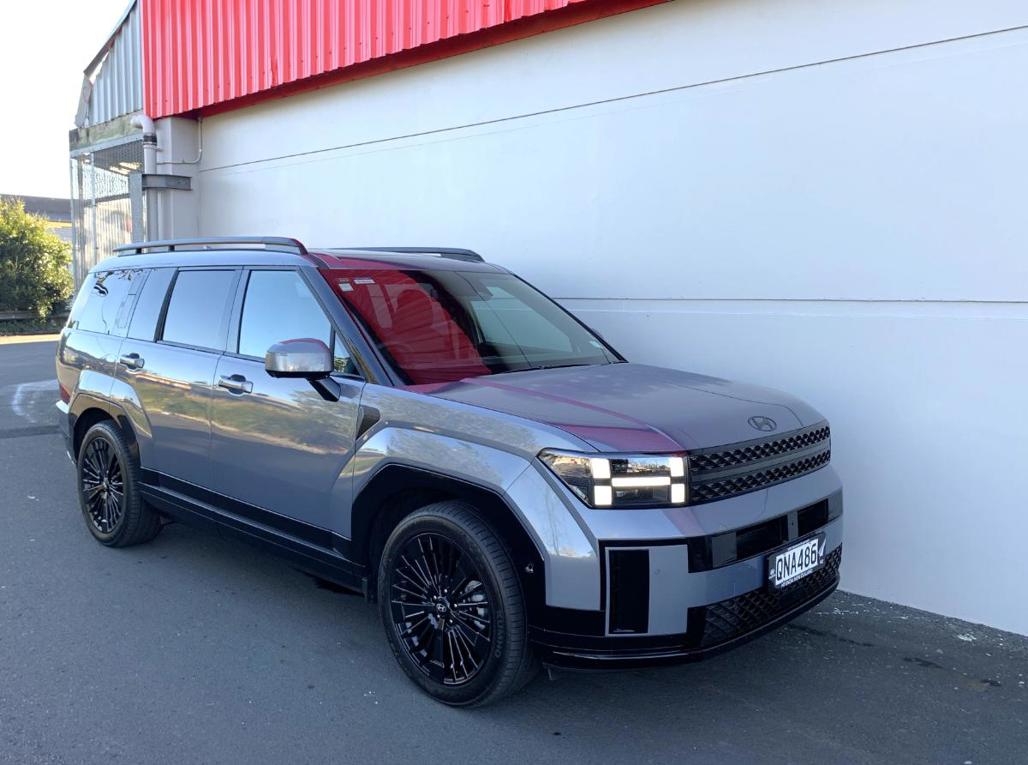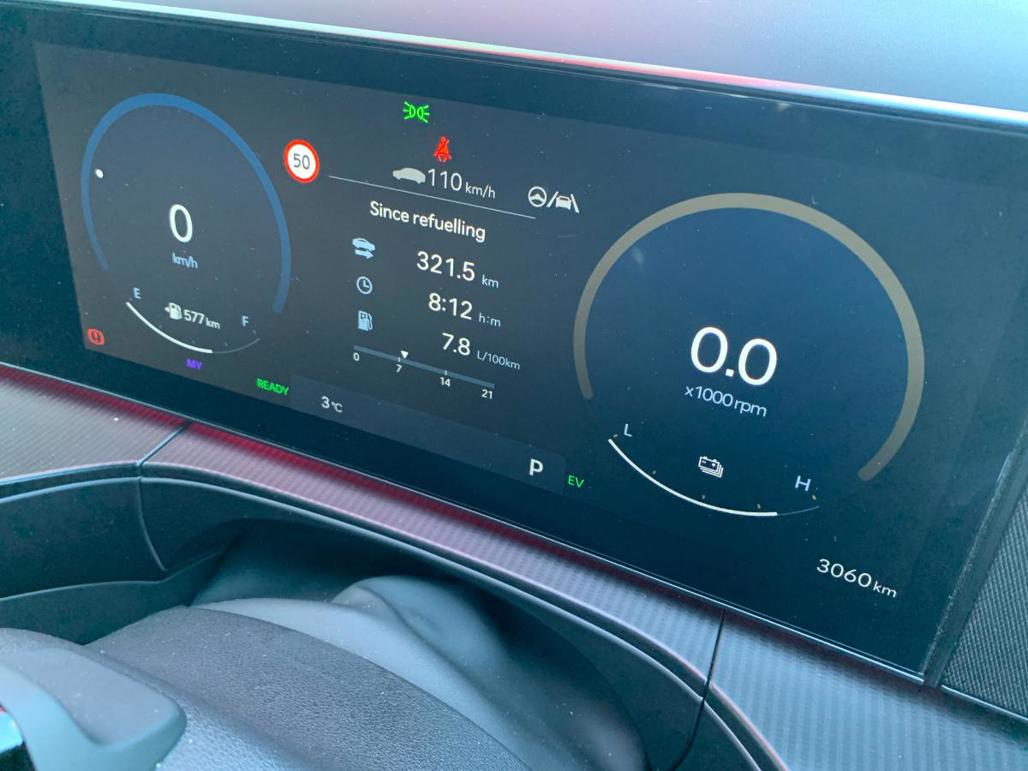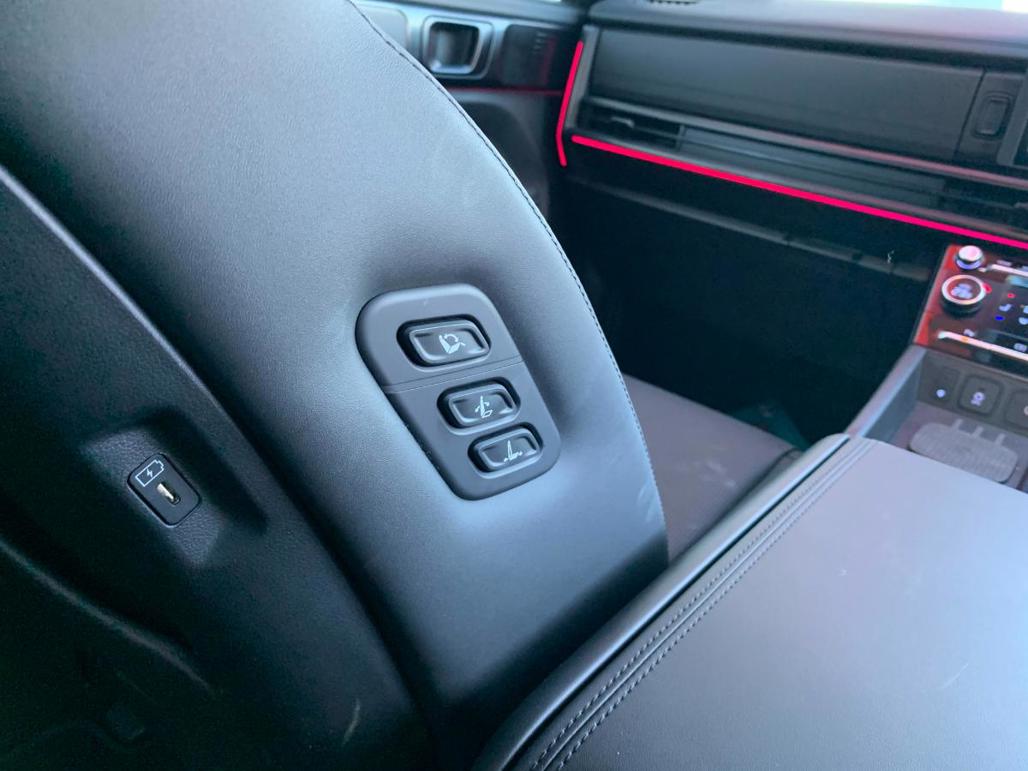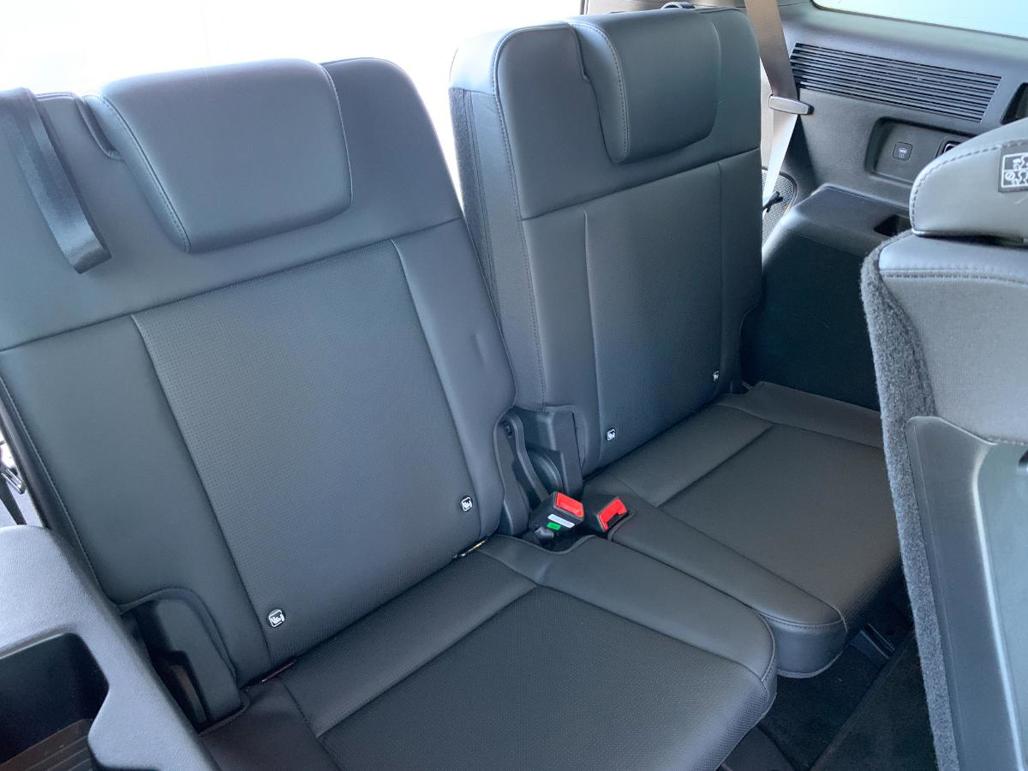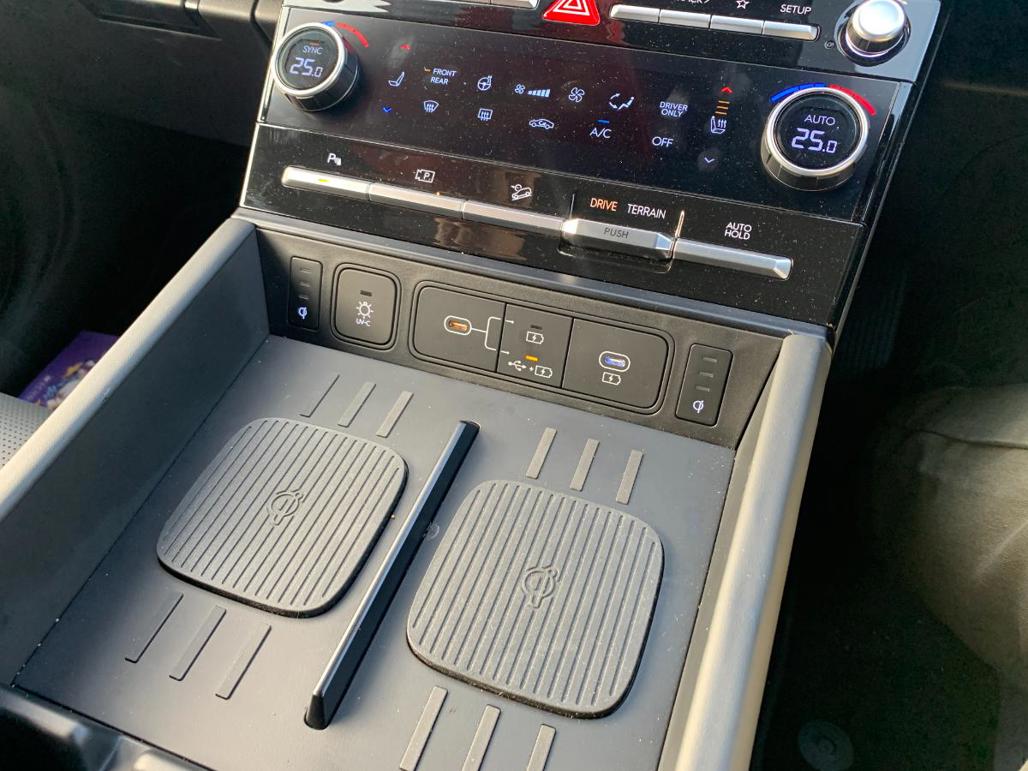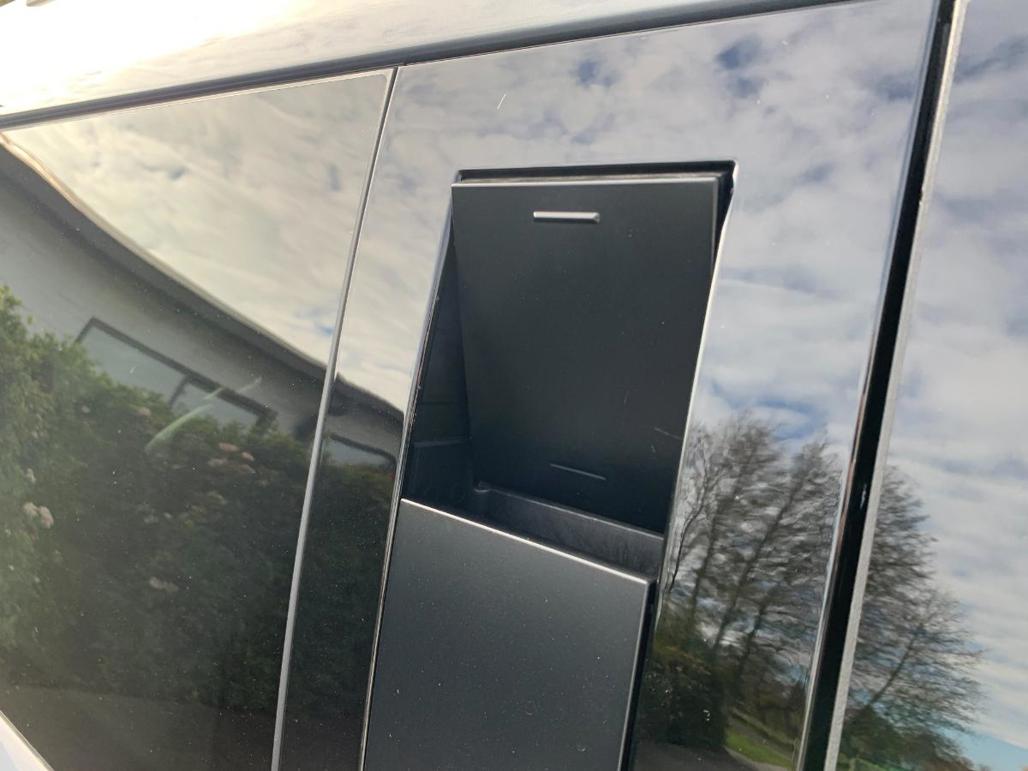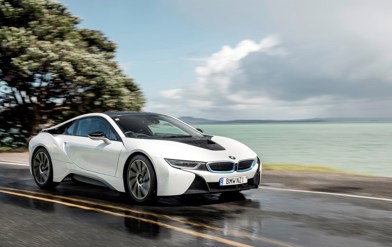In some ways, cars are like people. And the 2024 Hyundai Sante Fe Calligraphy is very much a people kind of car.
Apart from the obvious ability to carry seven, or six as a no-cost option with the middle row exchanging its bench for two captains chairs, the new Sante Fe has some real people skills.

As humans, we are attracted by (1) appearance, held by (2) perception and (3) sustained by personality.
Let’s deal with the elephant in the room. While team DRIVEN mostly likes the styling, public response was very mixed. And by mixed, we say largely against it. Call it the shock of something new, but while there are some appealing angles, the new 2024 Hyundai Sante Fe is very boxy, like an XL Nissan Cube, one of those blocks from Tetris, or for those with kids (or kids at heart), a bit Minecraft. Square is the word, and while this could be a renaissance of hip to be square, ala Kia EV9, it’s likely one of those slow burners that will grow on you with familiarisation.

Maximising space, it’s all quite functional, especially the view out the larger third-row windows, and the all-around vision. At first impression, it looks rather large, and it is 45mm longer than the outgoing model and 60mm taller, but it feels the same (or smaller) to drive. There’s lots of detailing to make things interesting, such as the Space Invaders lights front and rear (Hyundai calls them H lights), plus the opening front vents that keep things cool, or aerodynamically clean, as required.

Maybe it’s the decreasing angle of the glass surround, but it visually sits lower at the rear, like there are five passengers loaded up, even when not.
It’s a bold design, and surely one we’ll acclimatise to, though the rear end is its least liked angle, with the high glass, smooth tailgate and low lights proving the most polarising of all; width and function are the key benefits.

The perception part of the new Sante Fe could also initially be off-putting: gone is the venerable 2.2-litre diesel engine, that’s been part-and-parcel of Sante Fe for 17 years. In its place is only the 1.6-litre petrol turbo four-cylinder, that was also part of the previous gen, now moved from undercard to main event. Related spec fact: weight is 1980kg plus driver.

Its modest-sounding 132kW parallels finding out that your date is into Extreme Ironing, naval fluff and Quidditch. OK, they’re harmless, but I need to know what else.
Thankfully there is more, with the Sante Fe also fitted with a hybrid battery and motor, that helps boost both power and economy, giving it a bump to 172kW (up 3kW from previous) and 367Nm (17Nm up). For comparison, the departing turbo diesel made 148kW and 440Nm. Towing capacity also drops from 2500kg to 1650kg.

While the perception is a little off-putting, the new engine is actually better in person than on paper: the hybrid fills in a lot of the gaps of the small capacity engine around town: it’s always charged, so offers the quiet convenience of EV mode at times, but smoothly powers up the 1.6 four-cylinder to give it some punch, or economy assist. It does need a heavier right foot to summons that punch, especially when compared to the larger and 20 per cent torquer diesel, but the new engine does quite a good job; even 0-100km/h arrives in a nippy 8.2 seconds, which is fast enough to zoom the kids around, with neither Eco or Sport mode having any real noticeable effect on its zip.

It’s also eco-friendly, too: with close to 1000km real range from its 67-litre tank of 91 octane; its 6.2l/100km claim is impressive, especially when compared to the diesel’s 7.1l/100km.

But, and there’s a but, it does need to work harder at higher speed, hauling heavier loads. With lots of passengers on board, and/or at higher motorways speeds, the hybrid has less input and both performance and economy dip a bit as the small engine audibly works harder: we struggled to just get 7.9l/100km on a 500km highway trip, only seeing it dip under 8 around the suburbs.
Bonus content reminds us the diesel was often 8-10l/100km or more, and brought with it those greasy petrol pumps and RUCs.

Paddle shifters also adjust the amount of battery regen, though we found it perfectly fine on the maximum 3 level.
So, does that sustained personality keep the Sante Fe wholly more entertaining? For the most part, it’s overflowing with personality. In our top-line Calligraphy, $95k as an intro price before reverting to its normal $105k, there’s an abundance of comfort and tech.

From small things like the digital interior mirror, parking assist and crash avoidance technology, and smart cruise control, to its cameras that display in the dash when changing lanes to help avoid blind-spot crashes; there’s also a new first-row Relaxation Seats, that recline and raise leg rests.
While the majority of the dash is quality, approaching premium, there are areas like the felt-like roof lining and sun-visors that are very soft and velvety want-to-touch materials.

A big 6.6-inch full-touch climate screen now joins the main curved 12.3in cluster and digital gauge screens, the centre console lid now flips from the front or rear, handy for rear passengers, while dual wireless phone charging pads and even a UV sterilisation multi-tray atop the dash offers new things to talk about.
It’s lacking second row climate control, only seat heating, and the third row is cooling only, as it has been for generations, so cabin heating can take a while. Good reason to use the remote starting to warm everything up. Third-row Isofix mounts and backrest tilt adjustment are handy, though.

There may be a discrete bar graph on the dash, and an EV driving light, otherwise it’s all fairly normal/modern inside, with a Head-Up Display, active cruise control, different drive modes for mud, sand and snow, and, unfortunately, a trio of warnings that join the highly annoying club.

Even wearing sunglasses, while glancing around in traffic or at the mirrors triggers a response from the car’s sensor that your eyes are not watching the road, which quickly transitions from slightly annoying to infuriating in a matter of moments – especially when dealing with the typical distractions of carting lots of passengers around, and, for example, monitoring heavy traffic.

A speed alert is meek enough, but similarly, increasingly infuriating, especially when it’s beeping at you for doing 103km/h in a 100km/h zone, when the actual GPS speed is 97km/h. And then there’s the coffee break alert, the final straw for the car telling you you’re too unsafe to drive right now. Yes, they can be disabled, but default on upon start-up. It’s just too much, and, to be fair, indicative of a glut of new cars that have similar overly zealous alerts to meet five-star safety standards.

However, other niceties include a dual sunroof, and a Car Wash mode that closes all windows and sunroofs, deactivates the auto wipers and tailgate button and folds the side mirrors. Even the memory seat buttons are simplified, like radio presents: just hold to store. And there's the carryover passenger seat adjustment on the driver's side, which is very handy.
Exterior handles on the C-pillar could be handy for those stepping onto the sill panel and needing a bit more stability to access the roof racks.

Yes, the new 2024 Hyundai Sante Fe is like a person: some parts you like, some parts you don’t, and a few things that you can’t stand, but an impressive SUV all the same. Though at a special $82,990, the outgoing 2.2 diesel Sante Fe Calligraphy has also become a little more enticing.
BREAK IT DOWN
Hyundai Sante Fe Hybrid Calligraphy
ENGINE: 1.6 petrol, turbo four, with 1.49kW battery and 44kW hybrid motor
POWER: 132kW/265Nm (engine), 172kW/367Nm (combined)
0-100KM/H: 8.2sec (tested)
GEARBOX: Six-speed auto
ECONOMY: 6.2l/100km (claim), 7.9l/100km (tested)
PRICE: $94,990 (intro price)






